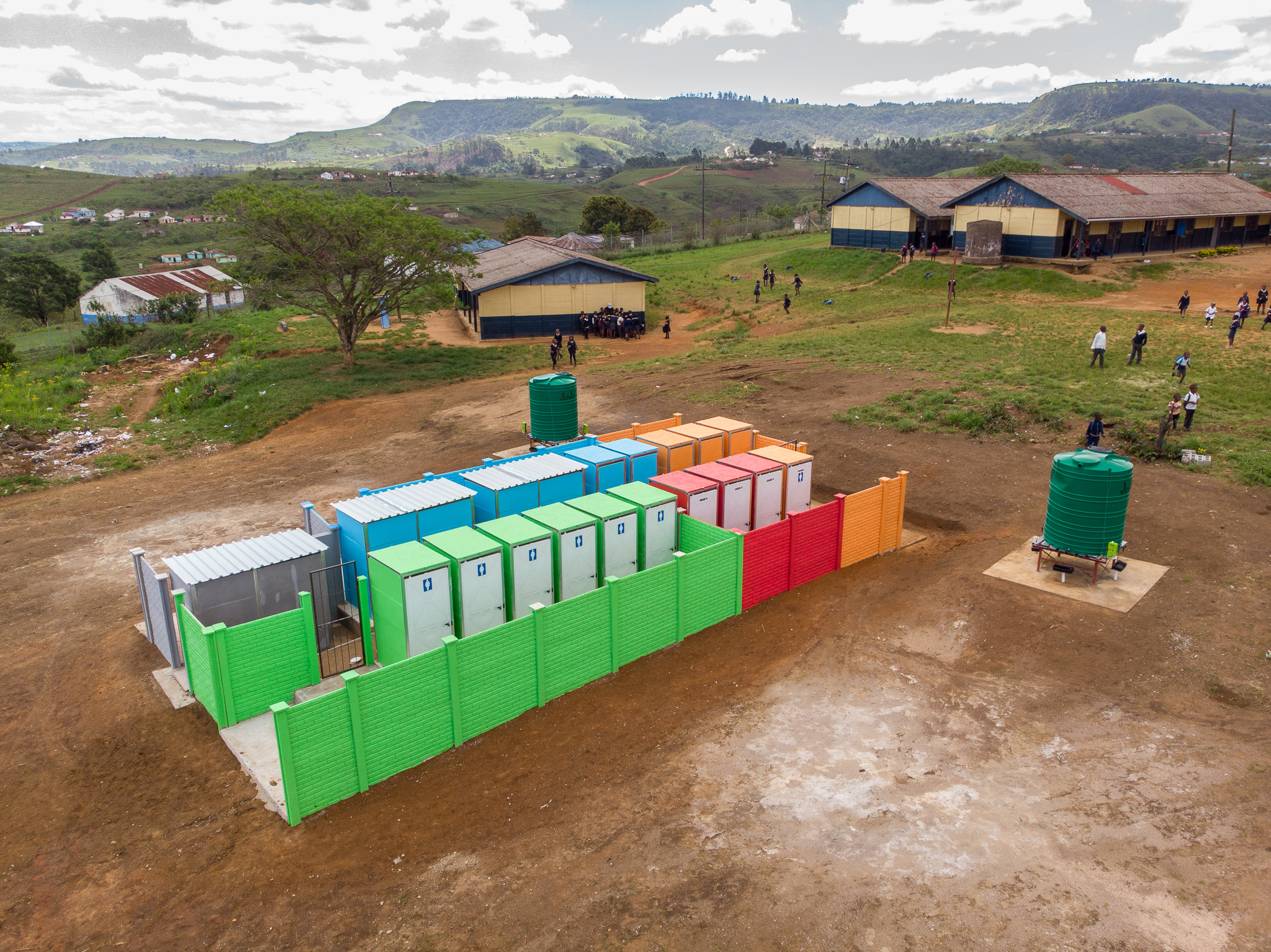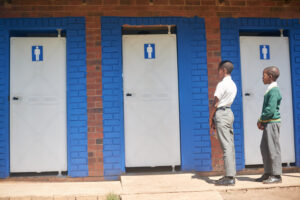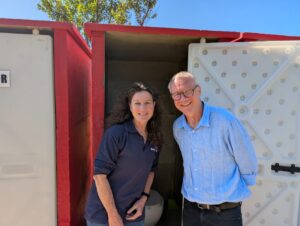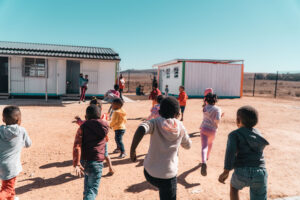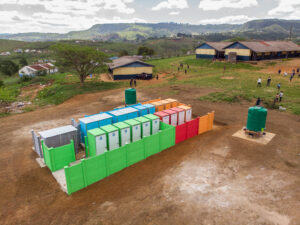At a small rural school in KwaZulu-Natal, the day once ended far too soon. Children were sent home by lunchtime, not because of bad weather or exams, but because there was nowhere or the children to relieve themselves. The pit toilets were full and broken. The chemical toilets had been locked after the supplier stopped servicing them. For learners at Mpofanyana Primary, this was more than an inconvenience. It was a daily risk, a health hazard and a barrier to learning.
Mpofanyana’s story is far from unique. Across parts of the uMgungundlovu and Zululand Districts, hundreds of children face the same reality: broken, unsafe facilities with cracked slabs and missing doors, long queues for chemical toilets and no water to wash their hands. In one school, five chemical toilets served more than 230 learners. In another, boys and girls shared a single unsafe sanitation facility.
In these communities, where 63% of people live below the poverty line and nearly half have no income, safe sanitation has too often been left behind. In April this year, Breadline Africa received 110 applications from schools in just one municipal district battling with dangerous sanitation facilities.
A transformation was realised for five schools when a family foundation partnered with Breadline Africa to tackle the crisis. In just weeks, 70 new toilets, urinals and handwashing stations were installed across five rural schools in KwaZulu-Natal, benefiting over 1,000 children. Designed with children in mind, they feature age-appropriate seats, privacy, water-saving toilets and handwashing stations. Crucially, each school now has a five-year maintenance plan, including desludging, training of cleaning staff and regular inspections, ensuring the facilities stay safe and functional for years to come.
What change looks like
At Vrystaat Primary, where learners once queued outside five overloaded chemical toilets, Principal Xaba described the impact as “life-changing”. Without queues or illness-related absences, children can now focus on learning.
At Bhaqa Primary, a full-service school for learners with diverse needs, the crisis was stark: one overflowing pit toilet and rarely serviced chemical facilities forced some children to relieve themselves outside. The new facilities have restored hygiene and dignity, allowing teaching to happen “with peace of mind”.
At Mpofanyana Primary, where children once had to be sent home due to a lack of functional toilets, the school now stays open all day, with access to clean, safe toilets that protect health and allow lessons to continue without disruption.
At Bhekizizwe Primary, serving nearly 600 learners, the pit toilets were structurally unsafe, some missing entire slabs, leaving open pits. Teachers struggled to get learners back into class after breaks. Now, with safe, child-friendly toilets, teaching time has been restored and parents have peace of mind.
At Robin Primary, a small farm school with just 27 learners, the impact is profound. Where everyone once shared a single unsafe pit toilets, there are now plentiful low-flush units and handwashing facilities, creating a safe and welcoming space for every child.
More than infrastructure
This work is about more than building toilets. It’s about restoring dignity, protecting health and giving children the chance to learn without fear or risk. In communities where a toilet can be the reason a child dies or drops out of school or falls ill, a safe facility becomes a symbol of equality and opportunity.
If we want every child in South Africa to have the chance to learn and succeed, we must start with the infrastructure that makes that possible. With the right partnerships and commitment, dangerous pit toilets can be replaced with facilities that are age appropriate, accessible and promote hygiene and dignity.
Want to be part of the change?
Almost one million children still face the daily reality of unsafe toilets in schools. You can help change that. Whether you are an individual who believes in dignity for every child or a company seeking meaningful social impact, your support can help create safe school toilets and brighter futures – one seat at a time.
Find out how you can get involved Toilet Crisis – Breadline Africa

